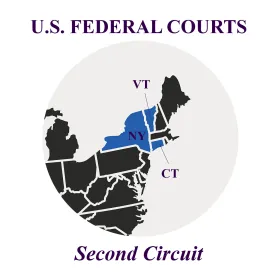The US Court of Appeals for the Second Circuit vacated a district court’s summary judgment grant in favor of a fine jewelry producer for trademark infringement, counterfeiting and unfair competition because factual disputes exist around whether the accused infringer’s use of the word “Tiffany” was merely descriptive of a particular ring setting, thereby supporting a fair use defense to infringement. Tiffany and Company v. Costco Wholesale Corporation, Case Nos. 17-2798-cv, -19-338, -19-404 (2nd Cir. Aug. 17, 2020) (Livingston, J.).
In 2012, a Costco customer alerted Tiffany that she believed Costco was selling diamond engagement rings advertised as Tiffany rings. When Tiffany approached Costco about the issue in December 2012, Costco asserted that its point-of-sale displays bearing the Tiffany name referred to the diamond setting styles of its rings, and that other similar point-of-sale displays also identified common ring settings such as “bezel” or “cathedral” settings. Costco also claims that within one week after Tiffany’s December 2012 outreach, it voluntarily removed all uses of “Tiffany” from its jewelry displays and has not since used the word “Tiffany” to identify any rings or setting styles.
Nevertheless, in 2013, Tiffany filed suit against Costco for trademark infringement and counterfeiting under the Lanham Act, and unfair competition in violation of New York state law, based on Costco’s sales of otherwise unbranded diamond engagement rings identified by point-of-sale signs containing the word “Tiffany.” In response, Costco raised the affirmative defense of fair use, arguing that its use of “Tiffany” on certain signage for rings was not as a source-identifying trademark, but merely to describe a particular six-prong diamond setting style. Costco also filed a counterclaim seeking to cancel certain federal trademark registrations for the TIFFANY mark as “generic” for a specific jewelry setting, and not entitled to registered trademark protection.
The district court granted Tiffany’s motion for summary judgment finding Costco liable for trademark infringement and counterfeiting as a matter of law. The district court then revised a jury’s damages award finding that Costco was liable for willful or intentional infringement to the tune of more than $21 million. Costco appealed.
On appeal, Costco argued it had successfully raised a question of material fact as to its liability for trademark infringement and counterfeiting and was entitled to present its fair use defense to a jury. The Second Circuit addressed the lower court’s trademark “likelihood of confusion” assessment under its own Polaroid factors and explained that if a factual inference must be drawn to arrive at a particular finding on a Polaroid factor, and if a reasonable trier of fact could reach a different conclusion, the district court may not properly resolve that issue on summary judgment. Here, the Court determined that Costco raised a triable question of fact as to at least three of the Polaroid factors, namely, (1) whether Costco’s customers were actually confused as to the source or affiliation of its diamond engagement rings, (2) whether Costco adopted Tiffany’s trademark in bad faith and (3) whether the relevant population of consumers was sufficiently sophisticated to avoid confusion.
Starting with actual confusion, the Second Circuit agreed a reasonable jury could find that Tiffany failed to present sufficient persuasive evidence of such consumer confusion. In particular, the Court echoed Costco’s argument that the testimony of only six confused customers out of nearly 3,350 who purchased the Costco “Tiffany-set” rings at issue was “insufficient to resolve the issue definitively against Costco.” In addition, the Court found that Costco presented an expert who adequately criticized the weight of Tiffany’s survey evidence, such that the survey could not be used to resolve the issue of consumer confusion in Tiffany’s favor as a matter of law.
As to the district court’s determination of Costco’s bad faith adoption of the “Tiffany” designation, the Second Circuit delivered a reminder that “subjective issues such as good faith are singularly inappropriate for determination on summary judgment.” Here, the Court pointed to “substantial evidence that Costco did not attempt to sow confusion among its consumers,” including the fact that Costco’s rings branded with its third-party supplier’s logo came in unbranded containers bearing no resemblance to Tiffany’s well-known robin’s egg blue packaging, and are provided along with Costco-branded sales documents and return policies.
On the issue of consumer sophistication, and again finding that the weight of a piece of evidence can be determinative as to whether summary judgment is appropriate, the Second Circuit found that a jury could reasonably conclude that the relevant population of consumers might be able to recognize that Tiffany had nothing to do with Costco’s diamond engagement rings, by giving more weight to Costco’s sophistication evidence.
Therefore, the Second Circuit court concluded that, taken together, Costco’s evidence on these factors created a genuine question of fact as to the likelihood of customer confusion and whether purchasers might recognize the word “Tiffany” as denoting a commonly used jewelry setting style rather than as a trademark. Furthermore, the Court found that Costco is also entitled to present its fair use affirmative defense and the triable questions on the fair use factors to a jury, and thus vacated the lower court’s ruling in favor of a new trial.




 />i
/>i
